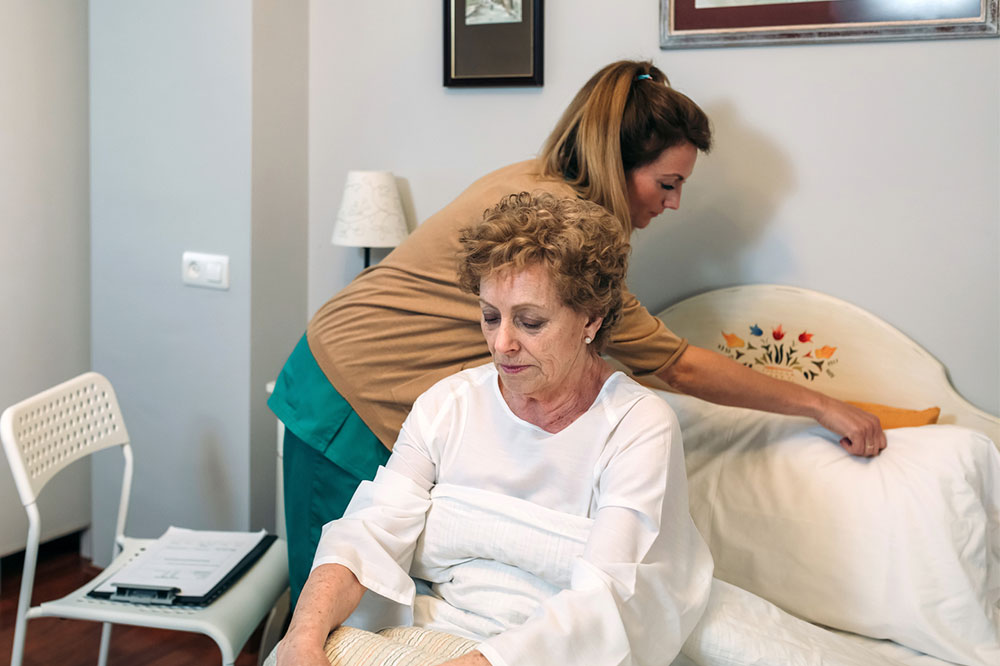
5 Ways to Manage Spinal Muscle Atrophy
One of the most common genetic diseases, spinal muscle atrophy causes weakness and deterioration in the muscles of the body. According to research, 95 percent of spinal muscular atrophy is caused by the mutations in the SM1 and SM2 genes, which leads to a shortage of survival motor neuron (SMN) protein. Due to this inadequacy, the brain cells controlling the spinal cord and related muscles shrink and die, causing spinal muscle atrophy.
“How to manage spinal muscle atrophy?” is a question that often comes up as this condition can cause a severe deterioration in the quality of life. There are several methods to manage spinal muscle atrophy, including
Physical Therapy
Physical and occupational therapy is one of the first things that spring to mind when asked, ‘how to manage spinal muscle atrophy?’ According to physicians, it is important for a person diagnosed with spinal muscle atrophy to do as much physical activity as possible without tiring themselves to maintain good physical and mental health. With a condition like spinal muscle atrophy, it becomes necessary to preserve the flexibility of joints, range of motion in muscles, allow proper blood circulation, and prevent joint injury or stiffness. Swimming in a warm pool, under supervision, is also a prescribed physical therapy for patients.
Diet
Diet plays an important role when learing how to manage spinal muscle atrophy. Those affected with this condition often suffer from the weakening of facial muscles, difficulty swallowing, risks of choking, etc. Therefore, the consistency of food must be such that patients of spinal muscle atrophy can easily eat it. Also, children with this condition run the risk of becoming obese due to a lack of exercise. Nutritionists also recommend feeding spinal muscle atrophy patients small portions throughout the day, then feeding them large three-time meals. Furthermore, diets that are rich in amino-acids need to be avoided to maintain the levels of amino acids in the blood.
Management of Back Muscle Weakness
One of the biggest challenges on how to manage spinal muscle atrophy is a weakness in the back muscles. In children, this weakness of the spinal muscles might develop into scoliosis or kyphosis where the spine curves side-to-side and forward, respectively. If the curved spine suppresses a lung, it might even lead to respiratory complications. Often, a back support or brace is recommended by doctors to manage this aspect of spinal muscle atrophy. While they are not permanent solutions, they do slow down the curvature of the spine. Spine-straightening surgery is the only permanent treatment. However, doctors would advise waiting until the child has achieved maximum spinal growth or till their respiratory problems subside.
Management ff Mouth-Muscles Weakness
People with spinal muscle atrophy can have problems swallowing food due to muscle weakness. It can lead to poor nutrition, dehydration, and sometimes obstruct respiratory airways and infections. To overcome this issue, a feeding tube or gastrostomy tube (g-tube) is inserted into the stomach. Patients receive all their nutrition directly from this tube. If their only problem is the weakness of chewing muscles, then food can be eaten the normal way for pleasure, and the g-tube can be used for basic nutrition. However, eating through the mouth should be avoided if a respiratory obstruction is a risk.
Management of Respiratory Muscles Weakness
Not only can weakness in the respiratory muscles cause issues like insomnia, headaches, excess sleepiness, etc. it can also be fatal in some forms of spinal muscle atrophy. To manage this aspect of spinal muscle atrophy, assisted ventilation can be delivered using a mask or mouthpiece. In severe cases, a tracheostomy is advised where a tube inserted in the trachea makes it easier to breathe. Clearing respiratory secretions and dislodging mucus in the airways is another essential part of managing weakness in the respiratory muscles.



